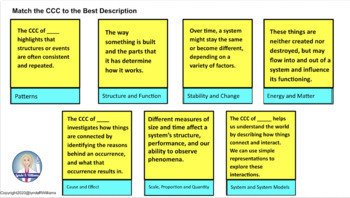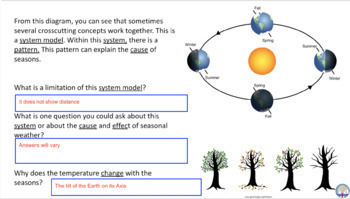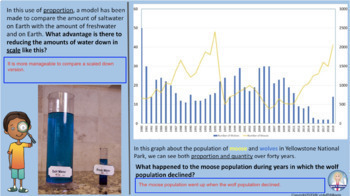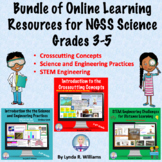Crosscutting Concepts Online Learning
- Google Drive™ folder

Also included in
- This combines three resources for Online Learning NGSS: It includes Science and Engineering Practices, Crosscutting Concepts, and Distance Learning STEM Engineering. All three units are created in Google Slides and are perfect for Distance Learning or for use in Google Classroom. Students will lovePrice $14.00Original Price $17.50Save $3.50
Description
Introduce students to the crosscutting concepts for NGSS and Utah SEEd with this great distance learning unit. Students will learn about the seven crosscutting concepts and students will get to practice with each CCC using Google Interactive Slides. If you are looking for a high-quality NGSS and Utah SEEd aligned to introduce and reinforce the crosscutting concepts for upper elementary students through online learning then this is the perfect lab resource for you.
The Crosscutting Concepts are:
1. Patterns Observed patterns of forms and events guide organization and classification, and they prompt questions about relationships and the factors that influence them.
2. Cause and Effect Mechanism and explanation. Events have causes, sometimes simple, sometimes multifaceted. A major activity of science is investigating and explaining causal relationships and the mechanisms by which they are mediated. Such mechanisms can then be tested across given contexts and used to predict and explain events in new contexts.
3. Scale, Proportion, and Quantity In considering phenomena, it is critical to recognize what is relevant at different measures of size, time, and energy and to recognize how changes in scale, proportion, or quantity affect a system’s structure or performance.
4. Systems and System Models Defining the system under study—specifying its boundaries and making explicit a model of that system—provides tools for understanding and testing ideas that are applicable throughout science and engineering.
5. Energy and Matter Flows, cycles, and conservation. Tracking fluxes of energy and matter into, out of, and within systems helps one understand the systems’ possibilities and limitations.
6. Structure and Function The way in which an object or living thing is shaped and its substructure determines many of its properties and functions.
7. Stability and Change For natural and built systems alike, conditions of stability and determinants of rates of change or evolution of a system are critical elements of study
This unit is made in Google Slides and Tpt will ask to put a copy of this resource in your drive. You can choose a personal or School Drive. Some districts do not allow google products and it is your responsibility to make sure you can use this resource before purchase. It is perfect for use in Google Classroom.
See more about the crosscutting concept and how to use them as a teacher on my blog.
If you have questions about my resources, please reach out to me at lywilliams1@gmail.com
Be sure to see my other resources for NGSS and Utah SEEd.
Science and Engineering Practices Distance Education Unit
STEM Engineering Challenges for Distance Learning






